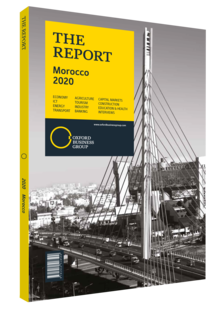Moroccan cities face challenges in urban mobility
As economic development progresses and urban centres rapidly grow, Moroccan cities are increasingly facing urban mobility challenges and seeing disruptive technologies change the way these problems are addressed. For example, Rabat, which saw its population increase by 18% over the last decade, is expected to accommodate 1.94m passenger movements per day in 2024, up from 1.49m in 2014. Casablanca’s 2019 figure of 7.8m movements per day is expected to rise to 10m by 2030. This sustained increase will require a harmonised effort between public and private players as well as the integration of various modes of transportation in and between cities.
Bus Lines
Bus transportation in Morocco is based on a concessions model. In August 2019 private transport operator ALSA, a subsidiary of UK-based National Express, inaugurated 37 bus lines in Rabat. Its fleet of 250 vehicles is set to increase to 350 over the coming years. The administrative capital also introduced a single, multi-modal ticket to make transportation easier.
In November 2019 Casablanca’s contract with M’dina Bus came to an end and a new partnership was inked with ALSA, which will progressively take over M’dina’s fleet and add 700 new buses by 2021. ASLA hopes to generate more than €1bn in revenue and double its presence in Morocco. The country, however, faces the challenge of an ageing fleet, and there have been calls for investments that would make buses a more attractive mode of transportation.
Contract Programme
In February 2019 the Ministry of Equipment, Transport and Logistics (Ministère de l’Equipement, du Transport et de la Logistique, METL) announced a new programme aimed at modernising country’s public transportation systems. The programme includes revisions to the legal framework governing public transportation, upgrades to the quality of service for all stakeholders and the modernisation of transportation companies’ resources. The METL also plans to develop upskilling programmes and upgrade its own nationwide fleet, and hopes to finance both projects through revenue from its own services. The METL aims to make public transport more comfortable for passengers while reducing carbon emissions from road transport by 35% by 2030.
Road Congestion
While efforts are being made to enhance public transport services, the government is also looking to improve conditions for users of private transport. With over one in four cars registered in Casablanca, the parking occupancy rate in the economic centre stands at an average of 85%, though it can reach 125% at times. In 2017 the government initiated a five-year plan to reorganise the city’s parking network, using public-private partnership models for projects that will add an additional 30,000 parking spaces around the city, up from 15,000 in 2017.
Ride-Hailing Apps
Following global trends, ride-hailing apps are slowly gaining popularity in Morocco, reducing the number of vehicles on the road and relaxing demand for parking spaces. Dubaibased ride-hailing service Careem filled in the vacuum left in Morocco when Uber had to end its services in 2015 for not complying with regulations.
While Careem connects independent drivers with customers, the Paris-based ride-hailing service Heetch follows a different strategy, working with taxi unions to offer an online platform that connects drivers to passengers. Another ride-hailing app, the local firm Roby Taxi, entered the market in December 2018, offering taxi services for a fixed monthly fee of Dh490 ($51.05). Roby plans to work with 150,000 of Morocco’s 240,000 taxis by 2024.
Path Ahead
The government’s initiatives are on the right track to further integrate public transportation networks and increase private sector participation. Public transportation should be considered as a means of boosting socio-economic integration, connecting suburban areas with economic centres and also providing for more inclusive development.
You have reached the limit of premium articles you can view for free.
Choose from the options below to purchase print or digital editions of our Reports. You can also purchase a website subscription giving you unlimited access to all of our Reports online for 12 months.
If you have already purchased this Report or have a website subscription, please login to continue.

